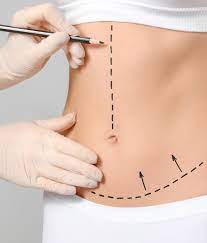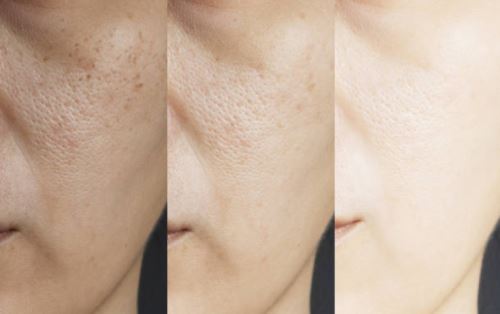How Is Excess Skin Removed During a Tummy Tuck?

A tummy tuck, medically known as abdominoplasty, is a surgical procedure aimed at removing excess skin and fat from the abdominal area while also tightening the muscles of the abdominal wall. This procedure is popular among individuals who have undergone significant weight loss or pregnancy, as these life events often lead to loose, sagging skin and weakened abdominal muscles. The tummy tuck helps restore a firmer, flatter, and more toned appearance to the abdomen. This article explores how excess skin is removed during a tummy tuck in Islamabad, the different types of abdominoplasty procedures, and the recovery process.
Understanding the Tummy Tuck Procedure
The tummy tuck procedure typically involves several key steps, which include anesthesia administration, incision placement, removal of excess skin, tightening of abdominal muscles, and wound closure. The exact technique used depends on the patient's needs and the type of tummy tuck performed.
Types of Tummy Tuck Procedures
There are different types of tummy tuck procedures designed to address varying degrees of excess skin and fat. These include:
Full Tummy Tuck (Traditional Abdominoplasty): This procedure is ideal for individuals with significant skin laxity and muscle separation. It involves an incision that runs from hip to hip just above the pubic area and a second incision around the navel.
Mini Tummy Tuck: This is a less invasive option for individuals with mild to moderate lower abdominal skin laxity. It involves a smaller incision and does not usually require repositioning of the belly button.
Extended Tummy Tuck: This procedure is suitable for individuals who have undergone massive weight loss and have excess skin extending to the flanks. It involves a longer incision that extends beyond the hip bones.
Fleur-de-Lis Tummy Tuck: This procedure is designed for patients who have a significant amount of excess skin both horizontally and vertically. It requires both a horizontal and a vertical incision.
Step-by-Step Process of Excess Skin Removal
1. Administering Anesthesia
The procedure begins with the administration of anesthesia to ensure patient comfort. General anesthesia is commonly used, rendering the patient unconscious throughout the surgery.
2. Making the Incision
Once the anesthesia has taken effect, the surgeon makes the necessary incision based on the type of tummy tuck being performed. In a full tummy tuck, the primary incision extends from hip to hip just above the pubic area. If the procedure involves repositioning the belly button, a second incision is made around the navel.
3. Lifting the Skin and Fat
After making the incision, the surgeon carefully lifts the skin and underlying fat away from the abdominal muscles. This step provides access to the underlying structures and allows the surgeon to tighten the abdominal muscles if necessary.
4. Tightening the Abdominal Muscles
In many cases, the abdominal muscles are stretched or separated due to pregnancy or weight fluctuations. The surgeon will suture the abdominal muscles together, creating a firmer, flatter core. This step is known as muscle plication and helps to enhance the overall contour of the abdomen.
5. Removing Excess Skin
Once the abdominal muscles are tightened, the excess skin is measured and trimmed. The surgeon pulls the remaining skin downward and determines how much needs to be removed to achieve a smooth, natural-looking result. Any excess skin is excised, and the remaining skin is re-draped over the abdomen.
6. Repositioning the Belly Button (If Necessary)
In a full tummy tuck, the navel must be repositioned to maintain a natural appearance. After the excess skin is removed, a new opening is created for the belly button, which is then sutured into place.
7. Closing the Incisions
Once the skin has been repositioned and the belly button is in place, the surgeon carefully sutures the incisions closed. In some cases, drains may be placed under the skin to prevent fluid buildup and promote healing.
Recovery and Healing Process
After the procedure, the patient is monitored closely in a recovery room before being discharged home. The recovery process varies based on the extent of the surgery and the individual’s healing capacity.
1. Initial Recovery Period
Patients typically experience swelling, bruising, and discomfort in the first few days post-surgery.
Pain medication and antibiotics may be prescribed to manage discomfort and prevent infection.
Drains, if placed, are usually removed within one to two weeks.
Patients are advised to wear a compression garment to reduce swelling and support the healing tissues.
2. Long-Term Recovery
Most patients can return to light activities within two weeks.
Strenuous activities and heavy lifting should be avoided for at least six weeks.
Full recovery and final results may take several months as the swelling subsides and scars fade.
Potential Risks and Considerations
While a tummy tuck is generally safe, it is important to be aware of potential risks, including:
Infection
Poor wound healing
Seroma (fluid accumulation under the skin)
Blood clots
Changes in skin sensation
Unsatisfactory scarring
Choosing a board-certified plastic surgeon and following post-operative care instructions can significantly minimize these risks and improve the outcome of the surgery.
Conclusion
A tummy tuck is an effective procedure for removing excess skin, tightening abdominal muscles, and enhancing the overall contour of the midsection. The removal of excess skin involves careful measurement, excision, and re-draping to achieve a smooth, toned appearance. While the recovery process requires patience and adherence to post-surgical guidelines, the results can be transformative, providing long-lasting improvements in body contour and self-confidence. For those considering a tummy tuck, consulting with a qualified plastic surgeon is essential to determine the most suitable approach based on individual goals and medical history.
Note: IndiBlogHub features both user-submitted and editorial content. We do not verify third-party contributions. Read our Disclaimer and Privacy Policyfor details.







